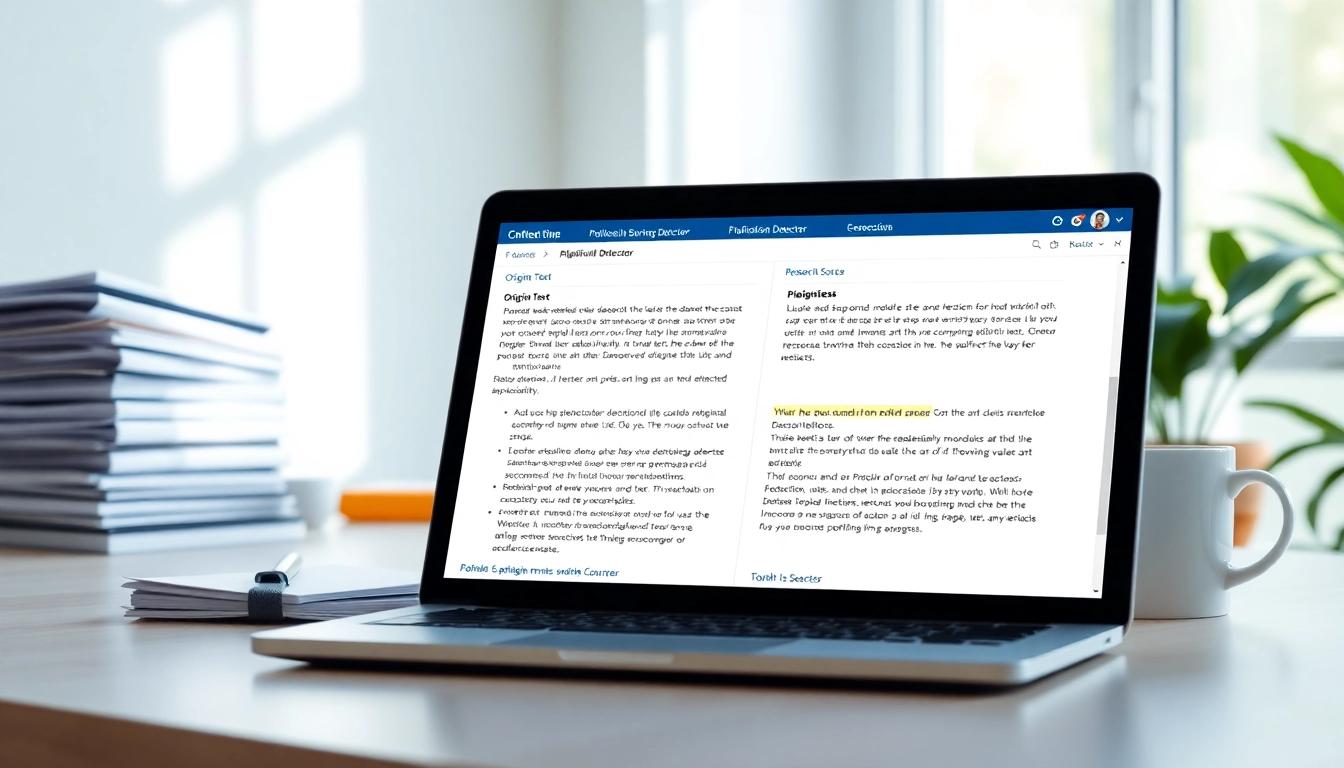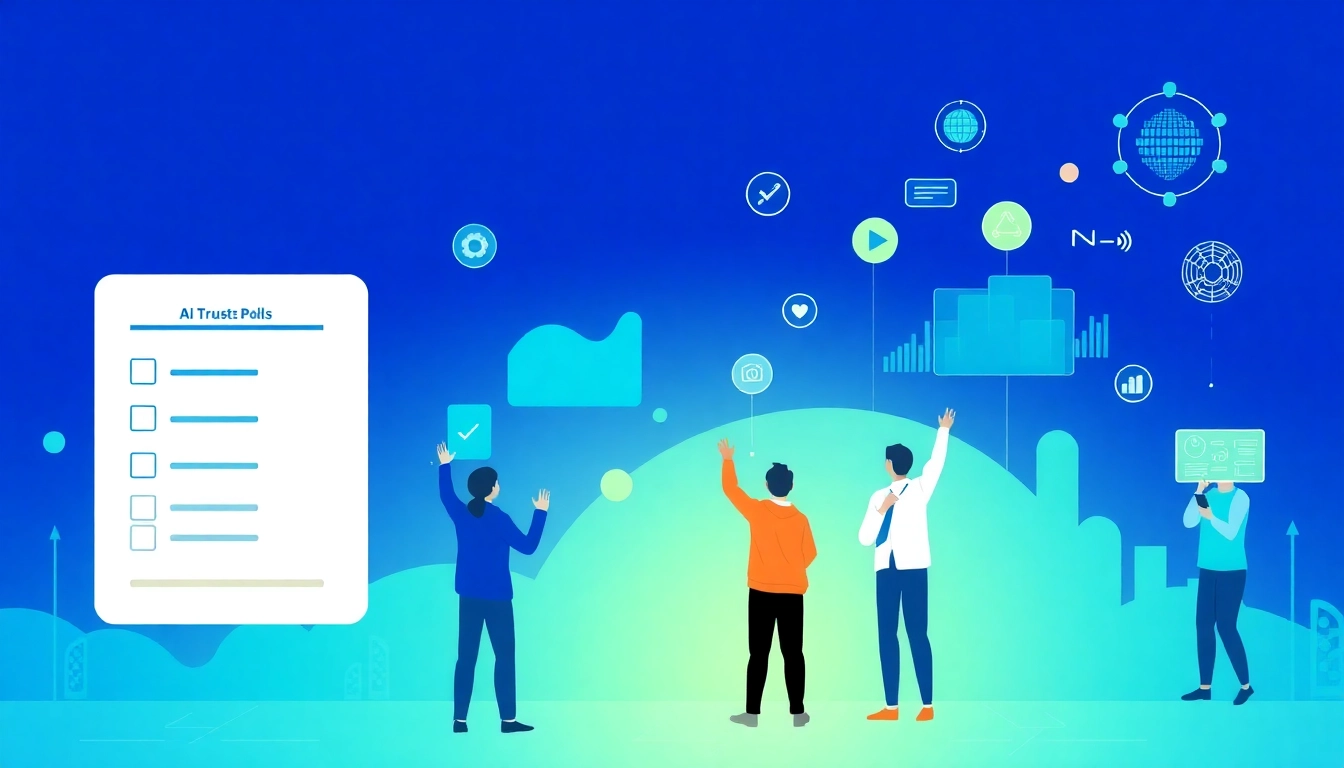Understanding Plagiarism and Its Impact
Plagiarism is a serious offense in both academic and professional environments. It not only undermines the integrity of the work but can also lead to severe consequences for individuals involved. Understanding what plagiarism is, its consequences, and how to combat it with tools such as a plagiarism detector is essential for anyone engaged in writing or research.
What is Plagiarism?
Plagiarism is defined as the act of using someone else’s work, ideas, or intellectual property without proper acknowledgment. This could include copying text directly, paraphrasing ideas without citation, or presenting someone else’s creative work as your own. The breadth of what constitutes plagiarism is quite vast and can encompass various forms of written content including essays, articles, research papers, and even digital content like videos or graphics.
The Consequences of Plagiarism in Academia
The consequences of committing plagiarism can be dire and far-reaching. For students, this might result in failing a course, being expelled from their institution, or facing legal repercussions. For professionals, plagiarism can lead to loss of credibility, legal action from original authors, and damage to personal and organizational reputation. Moreover, the academic community relies on the integrity of research and publishing; therefore, plagiarism can adversely impact the collective body of knowledge.
How a Plagiarism Detector Helps Maintain Integrity
A plagiarism detector is a vital tool that helps individuals and institutions ensure the originality of written content. By scanning documents against vast databases of existing works, these tools identify potential instances of plagiarism, allowing users to rectify these issues before submission or publication. This not only safeguards academic and professional integrity but also encourages responsible writing practices, reinforcing the significance of crediting original authors.
Choosing the Right Plagiarism Detector
When it comes to selecting a plagiarism detector, it is crucial to choose one that aligns with your specific needs. With various options available, understanding what to look out for can greatly affect the quality of the results.
Top Features to Look For
Several essential features should be prioritized when choosing a plagiarism detector:
- Accuracy: The tool should provide accurate results by comparing the submitted text against extensive databases to ensure unparalleled reliability.
- User-Friendliness: A straightforward interface that is easy to navigate enhances the user experience and allows less tech-savvy individuals to utilize the tool effectively.
- Detailed Reporting: Look for tools that provide comprehensive reports outlining areas of concern, including the percentage of originality and specific instances of potential plagiarism.
- Multi-Format Support: Ensure the tool can handle various file types, such as DOCX, PDF, and TXT formats, to enhance its versatility.
- Integration: The ability to integrate with other platforms, like content management systems or writing tools, can enhance productivity.
Comparing Popular Plagiarism Detection Tools
Several well-known plagiarism detection tools offer different features, pricing models, and user experiences. A brief overview of a few popular ones includes:
- Grammarly: Known for its writing assistance, Grammarly also provides a plagiarism detection tool that checks against millions of web pages and academic papers.
- Turnitin: Primarily utilized in academic institutions, this tool is often regarded as a benchmark in plagiarism detection and is known for its database of academic content.
- DupliChecker: A free tool offering straightforward plagiarism checks with a simple copy-paste interface, making it accessible for students.
- Scribbr: This tool integrates advanced algorithms with an extensive database, providing highly accurate plagiarism checks, often used by graduate students and professionals.
- Copyleaks: Not only checks for textual plagiarism but also verifies code and AI-generated content, making it a versatile choice for various users.
Cost Considerations for Plagiarism Checkers
The pricing of plagiarism detectors can vary greatly. Some tools offer free basic services, while others might charge a subscription fee or a per-use fee for in-depth checks. It is essential to consider your budget and the level of scrutiny required. For students, free options may suffice, but professionals might benefit from investing in a more robust service that can provide more comprehensive analyses and features.
How to Effectively Use a Plagiarism Detector
Knowing how to effectively utilize a plagiarism detector is crucial to ensuring that your work is original and credible. Here’s a detailed guide on the processes involved.
Step-by-Step Guide for Running a Plagiarism Check
To ensure a thorough analysis of your text, follow this easy step-by-step guide:
- Select the Right Tool: Choose a plagiarism detector that fits your needs based on your previous research and comparison.
- Upload Your Document: Depending on the platform, upload your document as a file or copy and paste the text directly into the tool.
- Initiate the Scan: Click on the appropriate button to start the scanning process, which may take a few seconds to several minutes depending on the text length and tool capability.
- Review the Results: Analyze the report generated by the tool, paying attention to highlighted sections of concern.
- Make Necessary Revisions: If any sections are flagged, revise those parts to ensure they are properly paraphrased or cited.
Interpreting the Results of a Plagiarism Detection
Once you have the results, it is essential to know how to interpret them accurately:
- Percentage of Plagiarism: Most tools provide a percentage indicating how much of your document matches other published work.
- Source Listings: Look for lists that show where the plagiarized content was matched. This can help you identify the proper citations.
- Highlighted Text: Review any highlighted text carefully as it indicates sections that may require sourcing or paraphrasing.
Correcting Plagiarism Issues in Your Work
When you identify instances of plagiarism, it’s crucial to correct them. Here are some strategies to consider:
- Paraphrasing: Rewrite the flagged sections in your own words, ensuring the ideas remain intact but the wording is distinctly your own.
- Citing Sources: Include proper citations for any quotes or ideas that are not your own to give credit to the original authors.
- Utilizing a Paraphrasing Tool: Consider using tools that help you rephrase content while maintaining its original meaning.
Advanced Features of Modern Plagiarism Detectors
Modern plagiarism detectors are not just about checking for copied content. They offer advanced features that can enhance the user experience and provide deeper insights into the originality of a document.
AI and Machine Learning in Plagiarism Detection
Advanced plagiarism detection tools utilize artificial intelligence (AI) and machine learning technologies to improve detection accuracy. These technologies enable the tools to learn from patterns in writing and improve their matching algorithms. AI-driven models can better recognize paraphrased and indirectly sourced content, making it difficult for unscrupulous users to bypass detection.
Multi-File Checking Capabilities
In today’s digital landscape, users may work with several files simultaneously. Modern tools offer the capability to check multiple documents at once, streamlining the process for authors and researchers. This feature is especially useful for students working on theses or dissertations, where they may need to check various chapters collectively.
User-Friendly Interfaces and Reporting Tools
A user-friendly interface is essential for effective content management. Advanced tools now provide simplified navigation, intuitive designs, and easy-to-understand reporting formats, allowing even first-time users to track the originality of their content seamlessly. Detailed reports often include suggestions for revision, enabling users to enhance their writing before submitting or publishing.
Best Practices for Academic Writing and Plagiarism Prevention
To uphold academic integrity and produce meaningful content, following best practices for writing and plagiarism prevention is critical. Here are a few essential strategies:
Creating Original Content
Original content creation is at the core of academic integrity. This process involves extensive research, critical analysis, and personal input. To develop original work:
- Engage deeply with sources and ensure a personal interpretation of the material.
- Use outlines to organize thoughts and promote your unique voice throughout the writing process.
- Incorporate personal experiences or insights to differentiate your work from existing literature.
Citing Sources Properly to Avoid Plagiarism
Proper citation is vital for academic writing. Familiarize yourself with the required citation style (APA, MLA, Chicago, etc.) and ensure all sources are cited accordingly. Tools like citation generators can assist in formatting references correctly and accurately.
Utilizing Plagiarism Detectors for Self-Editing
Before finalizing any work, making use of a plagiarism detector can assist in identifying unintentional instances of plagiarism. Run your document through the detector, review any flagged sections, make the necessary adjustments, and run it through the tool again to ensure your work remains original.




